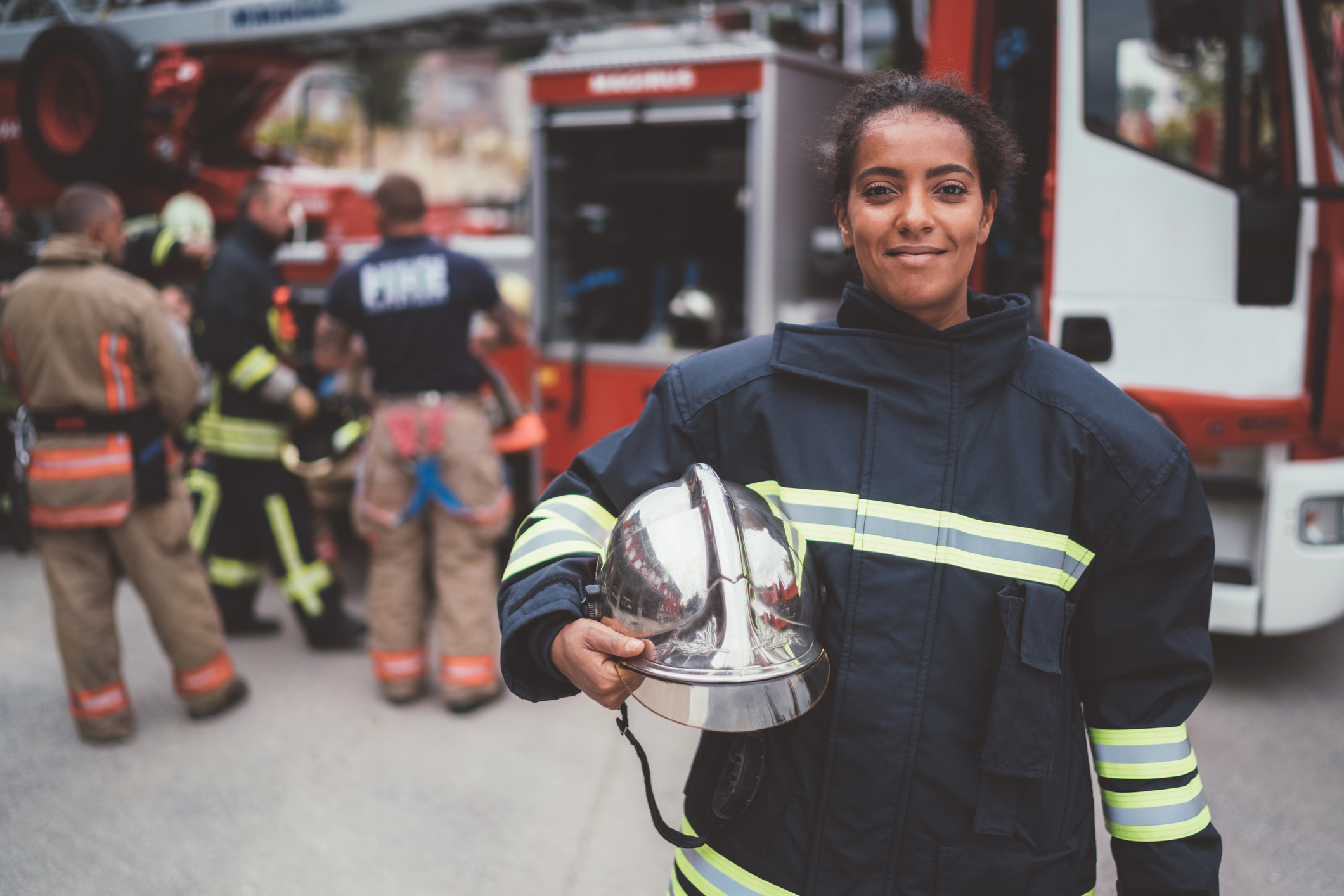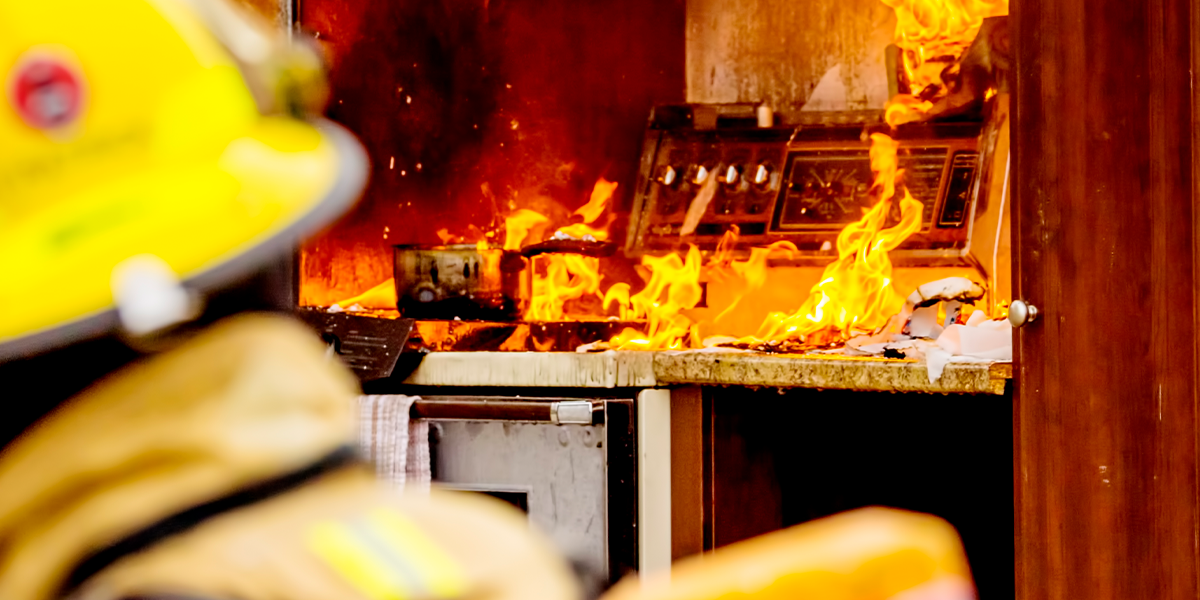Fireplaces enhance homes, providing warmth and a cozy ambiance. However, ensuring the safe operation of fireplaces is crucial, particularly in affordable housing.
This guide will delve into the essential components of a fireplace, best practices for safe operation, and proper methods for disposing of ashes and embers.
Putting fireplace risk in perspective
A report from the U.S. Fire Administration (USFA) on heating fires in residential buildings revealed that between 2017 and 2019, there were an estimated average of 34,200 residential heating fires annually, resulting in an average of $367 million in property losses each year.
The report identified heating as the second leading cause of residential building fires, trailing only cooking fires during the same period. Heating fires, as defined by the USFA, encompass fires caused by fireplaces, heating stoves, chimneys, central heating units, portable heating units, and water heaters.
According to the report, 80% of documented heating fires occurred in one- and two-family residential buildings, as opposed to multifamily residential buildings. This discrepancy is attributed to the presence of fireplaces, chimneys, and related equipment, which are prevalent in one- and two-family residences but less common in multifamily buildings.
Additionally, multifamily buildings typically feature central heating systems maintained by professionals, reducing the likelihood of heating fires resulting from poor maintenance or misuse compared to one- and two-family dwellings.
Understanding fireplace anatomy
While various types of fireplaces exist, they share common components:
Hearth: The floor of a fireplace.
-
Outer Hearth: Extends out into the room, beyond the fireplace opening.
-
Inner Hearth: Refers to the fireplace floor located inside the fireplace opening.
Firebox: The space where the fire is built.
Throat: An opening above the hearth that narrows to increase airflow. The opening narrows in width to increase airflow and draw smoke up the flue and out of the home.
Flue: A vertical shaft inside the chimney that carries smoke and fumes outside.
Damper: A critical component responsible for controlling the airflow in the fireplace when it's not in use. There are two main types of dampers that serve this function.
-
Throat Damper: Positioned above the fireplace, the throat damper is the more common type found in most fireplaces. It is operated either by manipulating a handle inside the firebox or by using a knob located above the fireplace opening. This knob is connected to a rotating metal shaft, which in turn controls the damper's position.
-
Top-Sealing Damper: Located at the top of the chimney, the top-sealing damper offers a different design and functionality. Attached to a cable that runs down the flue, this type of damper is controlled by a handle inside the firebox.
Smoke chamber: A triangular space above the throat leading to the flue.
Ash pit: A space below the firebox for ash and embers. Ash pits are more common in traditional masonry fireplaces and typically aren’t found in wood stoves. Without an ash pit, ashes must be manually scooped or swept out of the firebox.
Ash dump door: A metal door in the fireplace floor leading to the ash pit.
Ash pit door: An exterior metal door providing access to the ash pit for cleaning.
Best practices for safe fireplace operation
-
Conduct regular inspections: Have your fireplace and chimney inspected annually by a professional, per the NFPA 211 standard for chimneys, fireplaces, vents, and solid fuel-burning appliances. Look for any signs of damage, such as cracks in the chimney, loose bricks, or a damaged flue.

-
Maintain a clean chimney: Schedule regular chimney cleanings to remove creosote building.
-
Keep the area clear: Maintain a clear area around the fireplace. Keep flammable materials, furniture, and other objects at a safe distance. Establish a safety zone around the fireplace to keep children and pets at a safe distance.
-
Use a protective screen: Install a sturdy, heat-resistant screen or glass door to prevent sparks and embers from escaping the fireplace.
-
Use proper fuel: Use only dry, seasoned wood in your fireplace. Avoid burning green wood, as it can produce excessive creosote, a flammable substance that can accumulate in the chimney. Do not use accelerants, such as gasoline and lighter fluid, or oil-based products to start or revive a fire. This can lead to dangerous flare-ups.
IMPORTANT: Never build a fire using treated lumber, pallets, painted wood, trash, or plastic. Doing so can release toxic chemicals into your home and can damage the fireplace.
-
Control the fire: Build small, controlled fires. Avoid overloading the fireplace with too much wood. Use a fireplace grate to keep logs in place and allow air to circulate.
-
Monitor the fire: Never leave a fire unattended. Ensure that someone is present when the fireplace is in use.
-
Remove coal and ash buildup: Wait for coals and ashes to cool completely before disposal. Use a metal container with a tight-fitting lid for ash disposal. Store it away from flammable materials outside the residence on a non-combustible surface, like dirt or concrete.

-
Install carbon monoxide detectors: Place carbon monoxide detectors in the vicinity of the fireplace and in sleeping areas to alert you to any potential issues.
-
Have a working fire extinguisher: Keep a Class A fire extinguisher nearby and ensure that everyone in the household knows how to use it.
-
Educate the household: Teach residents about the importance of fireplace safety and establish clear rules of usage. Have an emergency plan in place, including an evacuation plan, in case of a fire-related emergency.
Operating a Class A fire extinguisher
Remember the acronym PASS to recall the basic steps for using a fire extinguisher.

Keep a safe distance from the fire and avoid inhaling smoke. After the fire appears to be out, monitor for any signs of re-ignition. If the fire can’t be controlled or if the fire reignites, evacuate immediately and call 911.
Safely starting a fire
Step 1: Before starting a fire, ensure the damper is fully open. This allows for proper ventilation and helps smoke escape up the chimney.
Step 2: Gather the necessary fire-starting supplies, such as newspaper, kindling, and larger seasoned logs. 
Step 3: Create a fire bed by crumpling several sheets of newspaper and placing them on the fireplace grate. This will serve as the initial kindling.
Step 4: Place a small amount of kindling on top of the crumpled newspaper. Kindling helps ignite the larger logs.
Step 5: Arrange two or three larger logs on top of the kindling in a crisscross pattern. Leave enough space between the logs to allow air circulation.
Step 6: Light the fire by igniting the newspaper using a long fireplace match or a fireplace lighter. Ensure the fire is catching evenly.
Once the fire is established, close the fireplace screen or door to prevent sparks from escaping. Gradually add more logs as the fire burns down.
Bottom line: Safety comes first when operating a fireplace
By following these guidelines, affordable housing providers can ensure the safe enjoyment of fireplaces for their residents. Safety is paramount, and a well-maintained fireplace can provide warmth and comfort for years to come.
Contact your HAI Group risk control consultant with any questions about fireplace safety.
This article is for general information only. HAI Group makes no representation or warranty about the accuracy or applicability of this information for any particular use or circumstance. Your use of this information is at your own discretion and risk. HAI Group and any author or contributor identified herein assume no responsibility for your use of this information. You should consult with your attorney or subject matter advisor before adopting any risk management strategy or policy.






